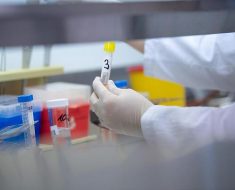
The number of NHS patients presenting to cardiology services for serious heart problems more than halved while the number of heart attacks diagnosed fell by 40% at one centre in Scotland during the coronavirus lockdown, finds research published in the online journal Open Heart.
The period coincided with the restrictions imposed on the NHS earlier this year while it prioritised its resources to focus on coping with an anticipated surge in patients infected with COVID-19.
While the findings reflect the experiences of only one centre in the UK, they are nevertheless consistent with other research on the health consequences of lockdown measures. “Therefore, it is likely that similar changes will be seen in other medical and surgical specialties,” point out the researchers.
In line with government guidelines, cardiology services adopted virtual outpatient clinics, redeployed staff to acute medical services and rescheduled non-urgent procedures, while also dealing with the cardiac complications of COVID-19, such as myocarditis (inflammation of the heart muscle), heart attack and heart failure.
How this might have directly and indirectly affected cardiology services and clinical activity hasn’t been measured to date.
The researchers therefore analysed key performance indicators in cardiology services in a district general hospital (Dumfries and Galloway Royal Infirmary, Dumfries) and a supporting tertiary service (Golden Jubilee National Hospital, Glasgow) before and after lockdown.
They compared four time intervals—each one month long—from January through to May of this year to identify any changes in cardiology service provision and clinical activity.
Overall, there were significant reductions in every area of service provision, including outpatient clinics, investigations, procedures and specialist community services, such as heart failure and cardiac rehabilitation.
During the first month of lockdown, the numbers of people seen for chest pain/breathlessness fell sharply, with cardiology ward and coronary care unit (CCU) admissions falling to 39 from 83 before lockdown—a drop of 53%.
Similarly, the number of patients diagnosed with a heart attack fell by 40%:18 compared with 30 before lockdown.
There was also a significant fall in the number of acute cardiac tests performed, with a 46% reduction in cardiac troponin T blood tests—used to detect heart muscle damage (374 down from 691)—and an 87% reduction in 12-lead ECGs (26 down from 199). Inpatient ECGs also fell to 43 from 77 before lockdown, a reduction of 44%.
Even though these reductions improved during the second month of lockdown, they were still below pre-lockdown levels of activity, suggesting an ongoing fall in the overall number of patients presenting to cardiology services, say the researchers.
During lockdown, clinicians at the Dumfries hospital adopted phone and video consultations to minimise infection risks to patients and staff while new and return clinic appointments were triaged into virtual or face-to-face clinics.
Overall, the number of patients referred from primary care to cardiology outpatient clinics fell by 80% (from 386 to 76) and as a result, face-to-face clinics dropped by 93% (from 474 to 30) alongside a substantial increase in the use of the virtual clinics.
There were various reasons for these changes, such as the restructuring and prioritisation of NHS services, reduced access to primary care, and patients’ reluctance to seek medical help due to fear of catching the virus, suggest the researchers.
“At the height of the pandemic, it is acceptable to deviate from the standard level of care and agreed guidelines in order to prioritise the delivery of essential services,” they write.
“However, adverse consequences for some patients presenting with worsening of their underlying cardiac conditions have been inevitable. Consequently, cardiology services should be ready to offer them urgent input and early intervention.”
One positive consequence of the changes brought in to deal with the pandemic has been the central role of technology in the delivery of care. The use of virtual clinics will be a “long-lasting legacy,” they add.
Source: Read Full Article





